HuntTheNorth.com’s Canine Corner
Northern Plains Top Retriever Training Tips
By Professional Trainer Wade Stottler
1. Start with a good pup. To increase your odds of ending up with a good retriever, select a pup from a litter with a strong pedigree behind it. Parents with hunt test or field trial titles increase the odds that your pup will have strong drive, good instincts, and trainability. Ideally, you would be able to hunt with the parents to make sure they have the hunting and personality traits you want.
Make sure the parents have health clearances on genetic traits such as the eyes and hips, and talk to the breeder to make sure your pup will not be affected by EIC (exercised induced collapse).
Finding a breeder you can work with and trust will be the final piece of the puzzle. He/she should offer guarantees on the eyes and hips of your pup, but they won’t be worth the paper they are written on if the breeder doesn’t stand behind them. If you are located near the breeder set up an appointment for a visit to see the parents, check on the care of the dogs, and meet the breeder in person. Don’t be afraid to ask for references.
2. Get your pup retrieving early. If your pup has not started retrieving before you pick it up from the breeder, get it started retrieving right away. You will need a bumper small enough for the pup to pick up, and an area to throw the bumper where there is no place to run with it except back to you. We use a number of areas, depending on the time of the year. In the summer we will mow a straight path in the tall grass of a ditch. During the winter we might blow a narrow path through deep snow.
Keep the sessions short and keep them fun. Three to five retrieves per session is plenty, always leave the pup wanting more. Give them a little loving and keep your voice upbeat when they bring the bumper back to you. If you immediately throw it again your pup will soon figure out that the faster they bring the bumper back the sooner they get to chase it again. Keep your throws low, so they stay in your pup’s field of vision. Remember to use no pressure and stay happy during the process.
We recommend you use only various types of training bumpers for retrieving. Using tennis balls or toys for retrieving can lead to various problems, such as hard mouth. Save the toys for when the dog is in it’s kennel.
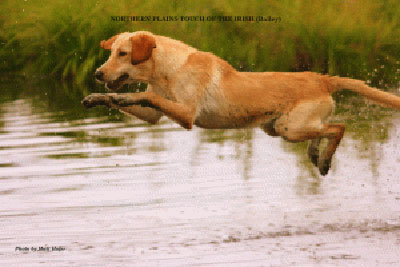
3. Introduction to birds. When your pup is retrieving bumpers consistently, it’s time to start with birds. Between 6-8 weeks old we start our pups retrieving frozen pigeons. Once it’s comfortable with the frozen pigeons, switch to dead unfrozen birds. The next step is to use a live, clip-wing pigeon for your pup to chase down.
It is fairly common at this point for the puppy to want to keep the bird and not bring it back to you. A simple 50 ft. check cord is the answer to this problem. Pull the pup in hand-over-hand while repeating the “here” command. If the pup drops the bird, ignore it and keep pulling it in. It is more important for your pup to obey the “here” command than it is for it to bring the bird in. The complete retrieve will come with repetition.
As your dog gets older repeat this process with ducks and pheasants. When introducing birds to an older dog, we start with a pheasant hide zip-tied to a 2” bumper, then go with a frozen bird, to an unfrozen bird, to a clip-wing bird.
Stay happy and upbeat during these introductions, you don’t want your dog to associate retrieving birds with something negative or unpleasant.
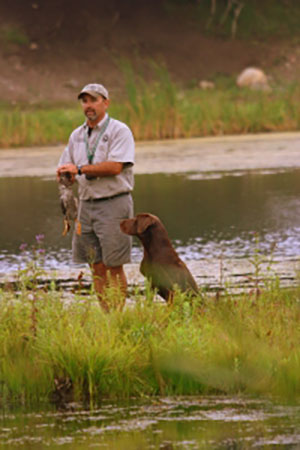
4. Introduction to the gun. Dogs are not born afraid of gunshots or loud noises, it is a man-made problem. The main idea behind proper introduction to the gun is to associate the noise with something positive for the dog. We will do introduction to the gun after the dog is at least five months old and has developed a strong eagerness to retrieve.
Place an assistant 100 yards away with a primer pistol or a .22 caliber gun loaded with blanks. Take a bumper and get your dog excited to grab it, then throw it in the opposite direction of the gunner. As soon as your dog grabs the bumper raise your hand as a signal for the gunner to shoot into the air.
If your dog ignores the sound and completes the retrieve, make sure to love it up and let it know how happy you are with it. Bring the gunner in twenty yards closer and repeat the process over and over, until at the end of the session your gunner is fifteen yards away. Then have the gunner throw the bumper and shoot the gun while it is in the air. If there are still no problems, repeat the process in a couple of days with a 20 gauge shotgun, (unless you have poppers, make sure the gunner is shooting in a safe direction).
If at any time during the drill your drops the bumper, its ears go back, or it otherwise indicates any signs of nervousness or discomfort, immediately stop the drill. Give your dog some loving and come back in a couple of days and try again with the gunner twenty yards farther away than whenyou ended the drill last time. Be patient and stay upbeat, and give your dog a lot of positive attention. If you have any problems, contact a professional retriever trainer in your area.
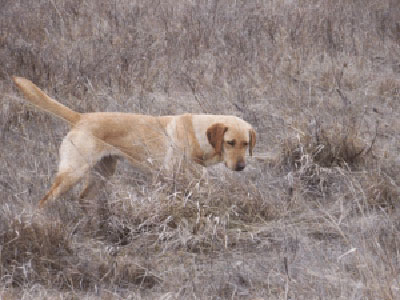
5. Introduction to the water. Your puppy can be introduced to the water any time after you bring it home from the breeder. We will wait until the pup has developed an eagerness to retrieve on land before we try the water. That is a good rule to follow in almost every aspect of training. If the dog cannot do it on land, it almost certainly won’t be able to do it in the water. Water makes everything more difficult!
Make sure that the water is warm at the location you choose to start at. We often start with water shallow enough for the pup to run through to the other side. A small, narrow, fairly shallow body of water is ideal. The shore of a big lake can be pretty intimidating to a young dog. A spot with a slow, gradual slope to the water works well for this drill. Start by taking a walk next to the water with your puppy off lead. You might even want to wade out ankle deep and encourage your pup to follow you. If your pup does get in the water, reinforce that action with praise and a little loving. Again, you want the pup to associate the water with something positive.
Whether or not your puppy gets in the water by itself, throw a couple bumpers on land next to the water for it to retrieve. Next, throw one that lands in the water a foot from shore. Get excited if the pup steps into the water and brings the bumper back to you, your pup will feed off of your excitement and get jacked up for the next retrieve! If the first retrieve is successful, gradually throw the next bumpers farther and farther out in the water. Three to five retrieves is plenty, stop the lesson and give your dog a lot of praise and petting. Progress to a little deeper water next time.
If the first retrieve is not successful, remain patient and upbeat, and try again. A good water attitude starts right now in your pup’s training! If you’re not successful after a handful of throws, you should stop the lesson and come back in a few days and try again. There is no set deadline for getting your pup into the water.

WADE STOTTLER
Northern Plains Retrievers
Madison, MN 56256
C 320-894-2274
http://www.northernplainsretrievers.com


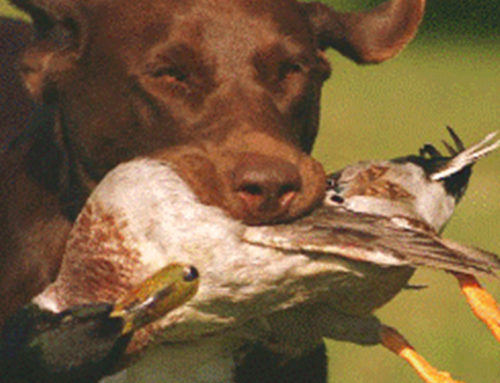
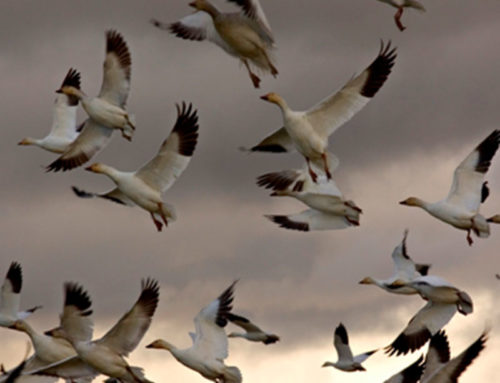
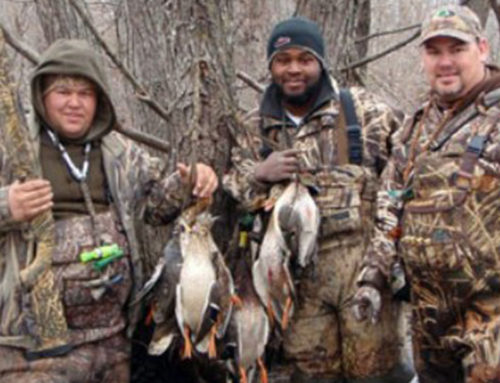
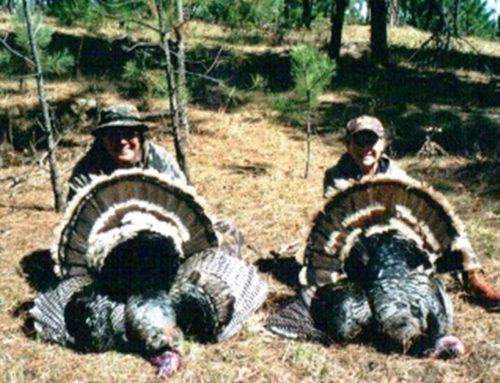
Leave A Comment